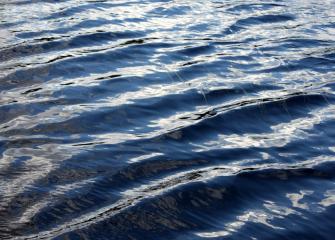High nutrient load fuels eutrophication

Too many eutrophying nutrients, nitrogen and phosphorus, continue to enter Finland's inland and coastal waters. Some nutrient runoff is of natural origin, but the majority —about three-quarters of phosphorus and nearly two-thirds of nitrogen—is human-induced.
The ongoing loading is evident in the state of the waters. The ecological condition of lakes has not improved in recent years, except for a few individual lakes. Coastal waters remain extensively eutrophied, and their condition has, on average, even slightly deteriorated.
Sources of loading
Approximately 90% of the human-induced phosphorus load and 80% of the nitrogen load come from diffuse sources, including cultivated fields, commercial forests, scattered settlements, and atmospheric deposition. Wastewater from industries and urban centers has a relatively minor national impact, but can have a major local impact. Humus loadings are mainly from forestry.
Point source loading has decreased
Nutrient discharges from industries and urban centers, especially phosphorus discharges, sharply declined in the late 20th century as industrial processes and wastewater treatment became more efficient. The downward trend has continued to the present day, although with some attenuation. Water protection measures have also reduced nutrient loading from fish farming, although not in recent years.
Minor changes in nutrient loads from agriculture and forestry
Diffuse pollution – from fields, forests, and rural settlements – is estimated using indirect methods. Model calculations indicate that phosphorus runoff from agriculture and forestry is slightly decreasing. This is due to reduced fertilization and implemented water protection measures. For nitrogen, the trend is less favorable: agricultural loading has not significantly decreased, and in forestry, it seems to be increasing. This is probably due to the effects of climate change leaching of nutrients.
Rivers transport nutrients to the Baltic Sea
A significant portion of the nutrients that end up in inland waters continues their journey to the sea. Rivers carry thousands of tons of phosphorus and nitrogen to coastal waters annually. Trends indicate a slight decrease in substance amounts, but the situation varies by sea area. The nutrient amounts brought by Finnish rivers represent about a tenth of the entire nutrient loading to the Baltic Sea.
Humus load is a concern
The increasing nitrogen load in the Bothnian Bay is linked to humus. Humus comes from drained peatlands, and the humus load in the Bothnian Bay is increasing. In addition to binding and transporting nutrients to the sea, humus feeds the bacterial growth in the sea, thereby affecting the structure of the marine food web. Humus also causes water to darken.
Set limits for nutrient loads for the sea are being exceeded
The Baltic Marine Environment Protection Commission (HELCOM) has established maximum levels for nutrient loads in various areas of the Baltic Sea. The maximum load for nitrogen for the whole of Finland has almost been reached, but the phosphorus target is still some way off. Additionally, certain more specific load limits designated for different marine areas in Finland continue to be exceeded.
Efforts to address eutrophication have become more effective
The primary approach to combating eutrophication in inland waters involves actions within catchment areas to reduce the load on water bodies. Regional water management plans outline measures aimed at achieving a good status for all waters. In small lakes, voluntary catchment restoration can also play a significant role. The Ministry of the Environment's program to enhance water protection specifically targets nutrient run-off from agriculture.


